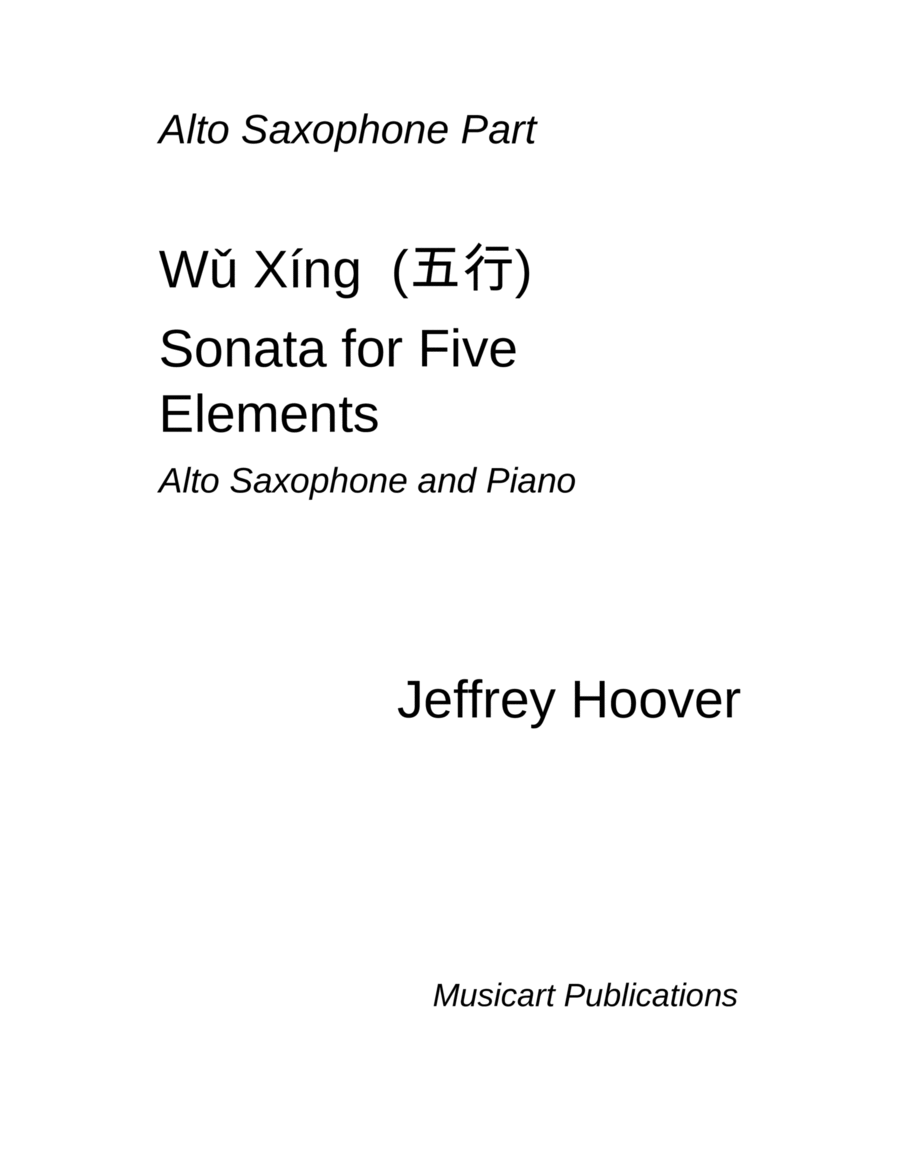Alto Saxophone,Piano - Level 4 - Digital Download SKU: A0.971651 Composed by Jeffrey Hoover. 20th Century,Contemporary,World. Score and part. 57 pages. Musicart Publications #4627679. Published by Musicart Publications (A0.971651). Winner of the 2019 SMP Press Contemporary Composition award, Wu Xing - Sonata for Five Elements (5 movements, 15 min. 30 sec) was composed by Jeffrey Hoover for Yusheng Li, who initiated the first professional university saxophone degree in China. A work for alto saxophone and piano, Wu Xing reflects a fusion of American and Chinese musical aesthetics and compositional techniques. Each movement represents an element in the traditional Wu Xing generative cycle. Musical elements of one movement carry into the next, in the same way these traditional Chinese elements evolve into the next: Wood, Fire, Earth, Metal, and Water. The fourth movement, Metal, is for unaccompanied saxophone, and includes extended techniques including microtones, multiphonics, and altered tone colors. As with other compositions by Jeffrey Hoover, Hoover has also created a series of paintings that visually interpret the music: Dancing in the Trees, The Ancient Lance, The Dragon's Creation, Temple Bells and Swords, and Life of the Earth. In the way the music is a fusion of American and Chines techniques, the paintings incorporate the Wu Xing philosophy approach. Images of the paintings may be projected during performance and are available directly from the composer.Jeffrey Hoover's compositions- music ranging from soloist to symphony orchestra -have received recognition through the prestigious Trieste prize, the international Luigi Russolo competition, awards from Mu Phi Epsilon, the Lancaster Fine Arts Festival, grants, publications fellowships and more than 20 commissions. He is a member of the ACME roster of Mu Phi Epsilon, recognized for distinguished achievement as a composer. One unique aspect of Hoover’s work is when he combines composition with his paintings, creating synergetic art that intrigues and captivate audiences and performers alike. His paintings are seen in exhibitions and in concerts where his paintings are projected while musicians perform his music. Hoover’s background as a performer includes both classical and jazz music, as saxophonist and conductor. His book The Arts and Society: Making New Worlds is published by Kendall Hunt Publishing.Hoover was born on September 11, 1959, in Anderson, Indiana. He holds a Ph.D. in Fine Arts (Composition and Interdisciplinary Fine Arts) from Texas Tech University, as well as and .Sc. from Ball State University. His career in higher education has included both faculty and arts administration appointments. For more information about his compositions, availability for appearance and festivals, and commissions, please contact him through his website.https://jeffreyhooverart.wixsite.com/mysite
